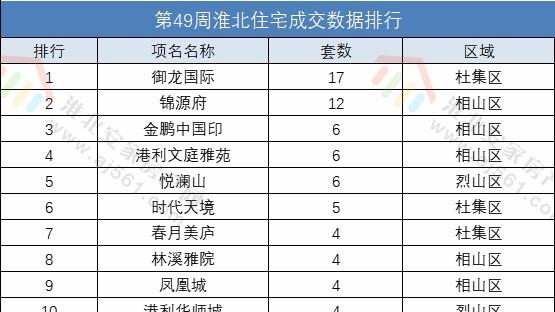Shellзј–зЁӢд№ӢжөҒзЁӢжҺ§еҲ¶иҜӯеҸҘвҖ”вҖ”forеҫӘзҺҜгҖҒwhileеҫӘзҺҜ
дёҖгҖҒforеҫӘзҺҜ 1гҖҒforеҫӘзҺҜвҖ”вҖ”иҜӯжі•дёҖпјҡ
for еҸҳйҮҸ in еҖј1 еҖј2 еҖј3
do
зЁӢеәҸ
done
- жҜҸж¬Ўе°ҶеҖјиөӢз»ҷеҸҳйҮҸеҗҺжү§иЎҢзЁӢеәҸпјҢжҜҸдёӘеҖјйғҪеӨҚеҲ¶дёҖйҒҚеңЁжү§иЎҢпјӣ
- еҖјдёҺеҖјд№Ӣй—ҙжҳҜйҖҡиҝҮз©әж јжқҘеҲӨж–ӯзҡ„гҖӮеҸӘиҰҒжңүз©әж јпјҢе°ұи®ӨдёәжҳҜдёҖдёӘеҖјпјӣ
- forеҫӘзҺҜз”Ёdoе’ҢdoneеҸ–д»ЈдәҶе…¶д»–иҜӯиЁҖдёӯзҡ„еӨ§жӢ¬еҸ·{}пјӣ
- forеҫӘзҺҜзҡ„дјҳзӮ№пјҢдҫҝдәҺз®ЎзҗҶе‘ҳиҝӣиЎҢзі»з»ҹз®ЎзҗҶж—¶еҖҷпјҢдҫҝдәҺз®ҖеҢ–ж“ҚдҪңгҖӮ
- forеҫӘзҺҜжҳҜиҝҷж ·зҡ„пјҢinеҗҺйқўеҶ…е®№жҳҜйҡ”ејҖзҡ„пјҢдёҚз®ЎжҳҜз©әж јпјҢиҝҳжҳҜжҚўиЎҢз¬ҰпјҢйҮҢйқўжңүеҮ дёӘеҶ…е®№е°ұеҫӘзҺҜеҮ ж¬ЎгҖӮ
- forеҫӘзҺҜжңҖдё»иҰҒзҡ„дјҳеҠҝжҳҜпјҡдәӢе…ҲдёҚйңҖиҰҒжҢҮе®ҡеҸҳйҮҸзҡ„дёӘж•°пјҢйҮҢйқўжңүеӨҡе°‘дёӘеҖјпјҢд»–е°ұеҫӘзҺҜеӨҡе°‘ж¬ЎгҖӮеӣ жӯӨжӣҙеҠ ж–№дҫҝдәҺзі»з»ҹз®ЎзҗҶгҖӮ
- зӨәдҫӢиҜҙжҳҺ1пјҡ
[root@root sh]# pwd
/root/sh
[root@root sh]# vi for1.sh#!/bin/bash
#жү“еҚ°ж—¶й—ҙfor time in morning noon afternoon evening
do
echo "This time is $time"
done#жү§иЎҢз»“жһңеҰӮдёӢпјҡ
[root@root sh]# chmod 755 for1.sh
[root@root sh]# vi for1.sh
[root@root sh]# ./for1.sh
This time is morning
This time is noon
This time is afternoon
This time is evening
- зӨәдҫӢиҜҙжҳҺ2пјҡжү№йҮҸи§ЈеҺӢзј©и„ҡжң¬
#!/bin/bash
#жү№йҮҸи§ЈеҺӢзј©и„ҡжң¬(дәӢе…ҲеҮҶеӨҮеҘҪеҚҒеҮ дёӘжҲ–дәҢеҚҒеҮ дёӘеҺӢзј©еҢ…)cd /lamp
#е°ҶжүҖжңүзҡ„еҢ…ж”ҫеҲ°дәҶ/root/lampзҡ„зӣ®еҪ•еҪ“дёӯ
ls *.tar.gz > ls.log
#еҺӢзј©еҢ…йғҪжҳҜд»Ҙ.tar.gzз»“е°ҫзҡ„ж–Ү件еҗҚпјҢ并е°Ҷе…¶еҶҷе…ҘеҲ° ls.log зҡ„ж–Ү件пјҲжҳҜжӣҝжҚўпјү
for i in $(cat ls.log)
do
tar -zxf $i &>/dev/null
done
rm -rf /lamp/lg.log
- зӨәдҫӢиҜҙжҳҺ3пјҡжү№йҮҸи§ЈеҺӢзј©и„ҡжң¬
[root@root sh]# ls
case1.shcase.shfor1.shif1.shif2.shif4.sh
[root@root sh]# vi for2.sh#!/bin/bashcd /root/sh/ls *.sh > ls.logy=1
for i in $(cat ls.log)
do
echo $y
y=$(( $y + 1 ))
done[root@root sh]# chmod 755 for2.sh
[root@root sh]# ./for2.sh
1
2
3
4
5
6
7
2гҖҒforеҫӘзҺҜвҖ”вҖ”иҜӯжі•2пјҡ
for (( еҲқе§ӢеҖјпјӣеҫӘзҺҜжҺ§еҲ¶жқЎд»¶пјӣеҸҳйҮҸеҸҳеҢ– ))
do
зЁӢеәҸ
done
- еңЁLinuxзҡ„ShellеҪ“дёӯпјҢеҸӘжңүз”Ё(())еҸҢе°ҸжӢ¬еҸ·жӢ¬иө·жқҘжүҚиғҪиҝӣиЎҢеҠ еҮҸд№ҳйҷӨиҝҷз§Қж•°еҖјиҝҗз®—гҖӮ
- зӨәдҫӢеҰӮдёӢпјҡд»Һ1еҠ еҲ°100пјҲзҹҘйҒ“еҫӘзҺҜж¬Ўж•°пјү
[root@root sh]# vi for3.sh#!/bin/bashs=0
for (( i=1;
i<=100;
i=i+1 ))
do
s=$(( $s+$i ))
done
echo "The sum of 1+2+...+100 is :$s"[root@root sh]# chmod 755 for3.sh
[root@root sh]# ./for3.sh
The sum of 1+2+...+100 is :5050
жіЁж„Ҹпјҡ
иҜӯжі•дёҖе’ҢиҜӯжі•дәҢзҡ„еҢәеҲ«жҳҜжҳҜеҗҰдәӢе…ҲзҹҘйҒ“еҫӘзҺҜдёӘж•°пјҢеҰӮжһңдәӢе…ҲзҹҘйҒ“е°ұжү§иЎҢвҖң иҜӯжі•дәҢ вҖқпјҢеҗҰеҲҷе°ұжү§иЎҢвҖң иҜӯжі•дёҖ вҖқ
- зӨәдҫӢиҜҙжҳҺ2пјҡжү№йҮҸж·»еҠ жҢҮе®ҡж•°йҮҸзҡ„з”ЁжҲ·
[root@root ~]# vim useradd.sh#Shellи„ҡжң¬еҰӮдёӢпјҡ
#!/bin/bash
#жү№йҮҸж·»еҠ жҢҮе®ҡж•°йҮҸзҡ„з”ЁжҲ·
read -p "Please input user name:" -t 30 name
#иҫ“е…Ҙз”ЁжҲ·еҗҚпјҢзӯүеҫ…30sпјҢ然еҗҺжҠҠдҪ иҫ“е…Ҙзҡ„еҖјиөӢеҖјз»ҷеҸҳйҮҸгҖӮз”ЁжҲ·еҗҚеҝ…йЎ»жңү规еҫӢпјҢеҰӮпјҢstu0гҖҒstu1...
read -p "Please input the number of users:" -t 30 num
#з”ЁжҲ·зҡ„дёӘж•°
read -p "Please input the password of users:" -t 30 pass
#и®ҫзҪ®з”ЁжҲ·еҜҶз Ғ
if [ ! -z "$name" -a ! -z "$num" -a ! -z "$pass" ]
#еҲӨж–ӯиҝҷдёӘеҸҳйҮҸйҮҢйқўжҳҜеҗҰдёәз©әгҖӮ-z еҰӮжһңдёәз©әпјҢиҫ“еҮәзҡ„еҖјдёәзңҹ;
! -z еҰӮжһңиҫ“е…Ҙзҡ„еҖјдёҚдёәз©әпјҢиҫ“еҮәзҡ„еҖјдёәзңҹ
# -a жҳҜйҖ»иҫ‘дёҺ
then
y=$(echo $num | sed 's/[0-9]//g')
# sed 's/[0-9]//g иҝҷиҰҒжҲ‘жүҫеҲ°дәҶ0-9пјҢеҸӘиҰҒжңүж•°еӯ—е°ұдјҡе°ҶиҝҷдёӘеҸҳйҮҸзҡ„з»“жһңжӣҝжҚўдёәз©әгҖӮ
if [ -z "$y" ]
then
for (( i=1;
i<=$num;
i=i+1 ))
do
useradd $name$i &>/dev/null
echo $pass | /usr/bin/passwd --stdin $name$i &>/dev/null
donefi
fi#з»“жһңеҰӮдёӢпјҡ
[root@root ~]# chmod 755 useradd.sh
[root@root ~]# ./useradd.sh
Please input user name:stu
Please input the number of users:3
Please input the password of users:123
... ...
tcpdump:x:72:72::/:/sbin/nologin
stu1:x:500:500::/home/stu1:/bin/bash
stu2:x:501:501::/home/stu2:/bin/bash
stu3:x:502:502::/home/stu3:/bin/bash
дәҢгҖҒwhileеҫӘзҺҜдёҺuntilеҫӘзҺҜ 1гҖҒwhileеҫӘзҺҜ
whileеҫӘзҺҜжҳҜ дёҚе®ҡеҫӘзҺҜ пјҢд№ҹз§°дҪң жқЎд»¶еҫӘзҺҜгҖӮеҸӘиҰҒжқЎд»¶еҲӨж–ӯејҸжҲҗз«ӢпјҢеҫӘзҺҜе°ұдјҡдёҖзӣҙ继з»ӯпјҢзӣҙеҲ°жқЎд»¶еҲӨж–ӯжҳҜдёҚжҲҗз«ӢпјҢеҫӘзҺҜжүҚдјҡеҒңжӯўгҖӮиҝҷе°ұе’Ңforзҡ„еӣәе®ҡеҫӘзҺҜдёҚеӨӘдёҖж ·гҖӮж јејҸеҰӮдёӢпјҡ
while [ жқЎд»¶еҲӨж–ӯејҸ ]
do
зЁӢеәҸ
done
зӨәдҫӢиҜҙжҳҺпјҡ
[root@root ~]# vim while.sh#!/bin/bash
#д»Һ1еҠ еҲ°100
i=1
s=0
while [ $i -le 100 ]
#еҰӮжһңеҸҳйҮҸi зҡ„еҖје°ҸдәҺзӯүдәҺ100пјҢеҲҷжү§иЎҢеҫӘзҺҜ
do
s=$(( $s+$i ))
i=$(( $i+1 ))
done
echo "The sum is:$s"[root@root ~]# chmod 755 while.sh
[root@root ~]# ./while.sh
The sum is:5050
2гҖҒuntilеҫӘзҺҜ
untilеҫӘзҺҜпјҢе’ҢwhileеҫӘзҺҜзӣёеҸҚпјҢuntilеҫӘзҺҜж—¶еҸӘиҰҒжқЎд»¶еҲӨж–ӯејҸ дёҚжҲҗз«ӢеҲҷиҝӣиЎҢеҫӘзҺҜпјҢ并жү§иЎҢеҫӘзҺҜзЁӢеәҸгҖӮдёҖж—ҰеҫӘзҺҜжқЎд»¶жҲҗз«ӢпјҢеҲҷз»ҲжӯўеҫӘзҺҜгҖӮзӨәдҫӢеҰӮдёӢпјҡд»Һ1еҠ еҲ°100
[root@root ~]# cp while.sh until.sh#!/bin/bash
i=1
s=0
until [ $i -gt 100 ]
do
s=$(( $s+$i ))
i=$(( $i+1 ))
done
echo "The sum is:$s"[root@root ~]# vim until.sh
[root@root ~]# ./until.sh
The sum is:5050
гҖҗShellзј–зЁӢд№ӢжөҒзЁӢжҺ§еҲ¶иҜӯеҸҘвҖ”вҖ”forеҫӘзҺҜгҖҒwhileеҫӘзҺҜгҖ‘жҖ»з»“пјҡ
- whileеҫӘзҺҜгҖҒforеҫӘзҺҜе’ҢuntilеҫӘзҺҜдёүз§ҚеҫӘзҺҜе…¶е®һйғҪжҳҜеҸҜд»Ҙзӣёдә’иҜҘж”№еҶҷзҡ„гҖӮ
- Shellи„ҡжң¬жңҖеӨ§зҡ„дјҳеҠҝжҳҜпјҡеё®еҠ©з®ЎзҗҶе‘ҳеҮҸе°‘йҮҚеӨҚж“ҚдҪңпјҢжҲ–иҖ…иҜҙеё®еҠ©з®ЎзҗҶе‘ҳиҝӣиЎҢзі»з»ҹзҡ„иҝҗз»ҙе·ҘдҪңпјӣ
жҺЁиҚҗйҳ…иҜ»
- PMSJеҜ»е№ійқўи®ҫи®ЎеёҲд№ӢзҺ°д»Ј(Hyundaiпјү
- еӨӘе№ід№ӢиҺІ
- Shell-BashеҸҳйҮҸдёҺиҝҗз®—з¬Ұ
- й—ІжқӮвҖңз»ҶйӣЁвҖқ
- дёғе№ҙд№Ӣз—’д№ӢеҗҺ
- ж·ұе…ҘзҗҶи§ЈGoд№Ӣgenerate
- з”ұжө…е…Ҙж·ұзҗҶи§ЈAOP
- жңҹеҲҠ|жңҹеҲҠ | еӣҪеҶ…ж ёеҝғжңҹеҲҠд№ӢпјҲеҢ—еӨ§ж ёеҝғпјү
- з”ҹжҙ»йҡҸ笔пҪңеҘҪеӨ©ж°”дёӢзҡ„ж„ҸеӨ–д№Ӣе–ң
- ж„ҹжҒ©д№Ӣ旅第75еӨ©











